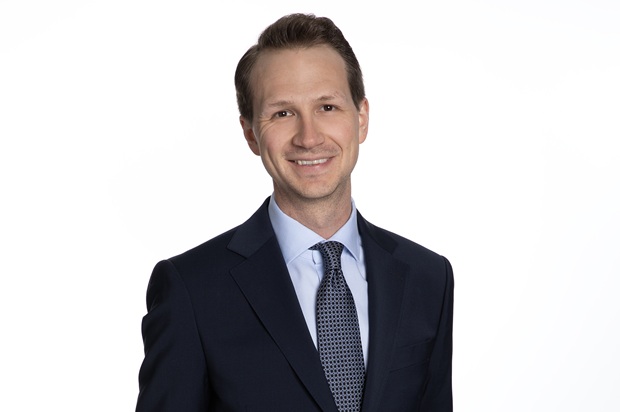
ESG risks, sustainable opportunities and bondholder engagement
Before the summer, Tell Media Group, in cooperation with Barings, Payden & Rygel and PGIM Fixed Income, organised a roundtable discussion at Nobis Hotel in Stockholm, focusing on sustainability in fixed income. Tell Media Group founder Niklas Tell and Nordic Fund Selection Journal editor Caroline Liinanki moderated the discussion.
The discussion started out with Caroline Liinanki asking the investors how they approach sustainability in the fixed income portfolio, both from an ESG integration perspective as well as from a more sustainable opportunity perspective.
TORBJÖRN KRONBLAD: “To address sustainability risk in fixed income, we work with two different portfolios. We have one SSA portfolio (supranational, sub-sovereigns and agency bonds) that invests into sustainability and one credit portfolio where sustainability is integrated into the investments process. In the SSA portfolio, we have narrow benchmarks, which reduces ESG risks. Here, we also invest opportunistically in green and social bonds. In the credit portfolio, we can go underweight and divest from sectors with significant ESG risks.”
FREDRIK TYCHE: “We primarily invest in funds with only a few direct holdings. When we do research on investments, we have the same approach across asset classes so our ESG assessment would be the same for a fixed income and an equity fund. We do an ESG assessment on the firm where there are a number of boxes that needs to be ticked and then we of course also look at the product. It could be that the product fits but that the manager fails our assessment. We need to tick both boxes in order to invest.”
LINDA SUNDBERG: “We have a similar structure to Nordea in this regard. However, at least historically, we’ve had a stricter policy than most other investors and that’s why we have two funds specifically made for us when it comes to fixed income where we’re the only investor. We’re a small team and that solution has made it easier for us.”
NIKLAS TELL: IS THIS SET-UP SOMETHING YOU HAVE DISCUSSED CHANGING?
LINDA SUNDBERG: “There has been discussions to do more impact investments and to focus more on being part of the transition, also when it comes to fixed income. Then we might need to look at other things as well.”
NIKLAS TELL: WHEN YOU LISTEN TO THE INVESTORS HERE, IS THIS SIMILAR TO WHAT YOUR HEAR FROM OTHER INVESTORS YOU INTERACT WITH?
LAURA LAKE: “I think what’s clear is that investors generally have both similar and different takes on ESG and sustainability – not only here in the Nordics, but across our global client base. The way we approach ESG and sustainability in fixed income is to focus on time horizon. In the short term, we look at the ESG factors and risks that could impact credit spreads in the next 12 months. However, many of the ESG factors that our clients care about are unlikely to impact credit spreads in such a short time-period, which is why we have developed frameworks and tools in order to include these client-directed factors in portfolios as well. In this regard, we’re well positioned as the majority of our assets are in customised client mandates where we can create solutions for clients that have similar but different views on these issues.”
JOHN PLOEG: “We have a similar setup in a way as we see ESG integration and sustainability as two different things. When it comes to ESG integration, we think it’s important to include the factors that are material, similar to what Laura was saying. Also, we don’t separate between ESG and other risks because we think that can become a bit arbitrary. You could have a company with higher ESG risks but where the balance sheet is very strong, and another with lower ESG risks but with a shakier balance sheet. We think you must ultimately come up with one overall credit risk view of issuer that includes ESG and non-ESG factors. On top of that, we’ve developed tools and frameworks in order to look at longer term sustainability factors that are more important to some clients.”
GARETH HALL: “Our approach is somewhat similar to what we have already heard. We score all issuers based on ESG factors. These ESG scores are then integrated into our overall fundamental credit risk scores through upgrade or downgrade adjustments. Views on how to approach topics such as exclusions and climate transition will differ across mandates. Having a systematic process in place enables us to construct appropriate portfolios for different clients.”
… continued … the roundtable discussion was originally published in issue 04, 2024 of Nordic Fund Selection Journal and a PDF of the complete story can be found here.
//Participants
- TORBJÖRN KRONBLAD, Co-head of fixed income & FX at AP4
- LINDA SUNDBERG, Head of sustainable investing at Svenska Kyrkan
- FREDRIK TYCHE, Portfolio manager/sustainability strategist at Nordea Life & Pensions
- LAURA LAKE, Head of ESG at Payden & Rygel
- JOHN PLOEG, Co-head of ESG research at PGIM Fixed Income
- GARETH HALL, Managing director, global high yield at Barings



